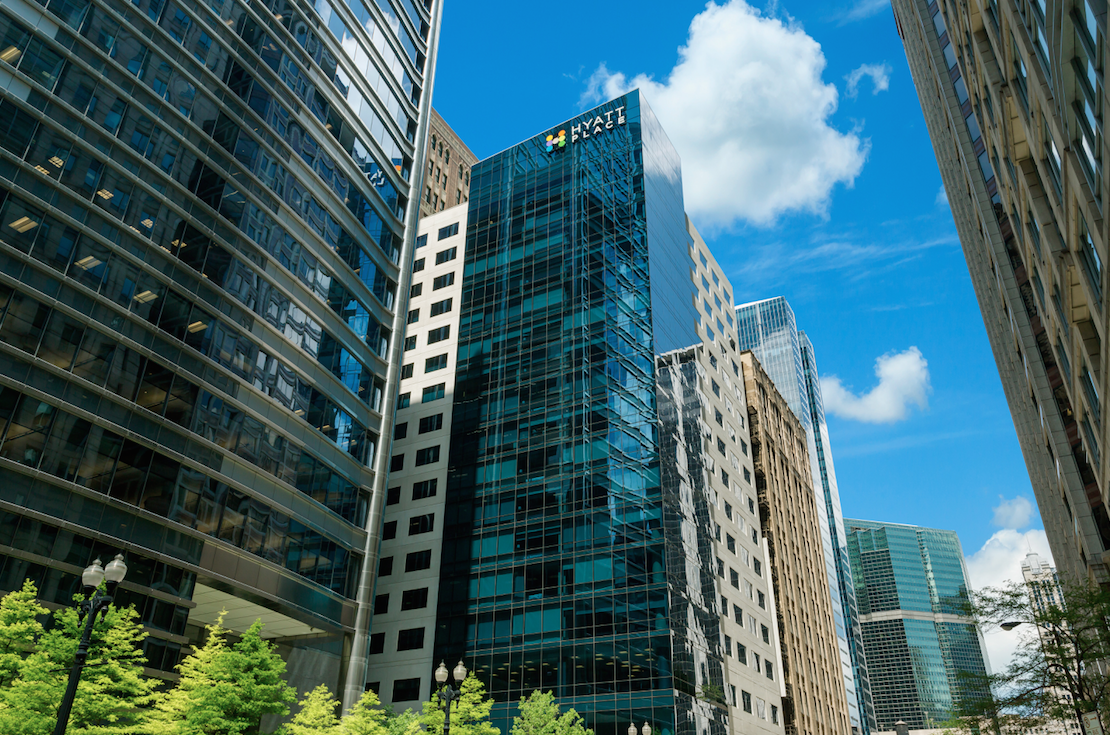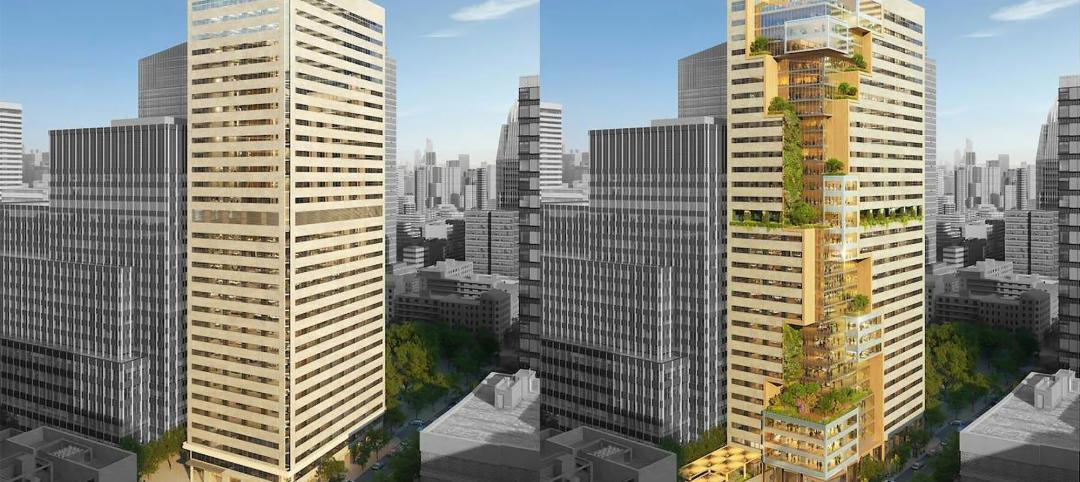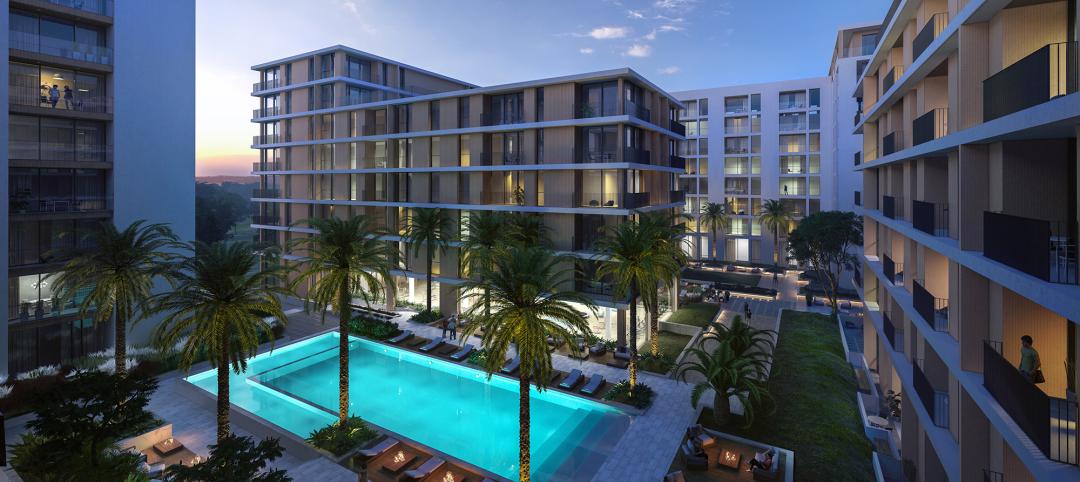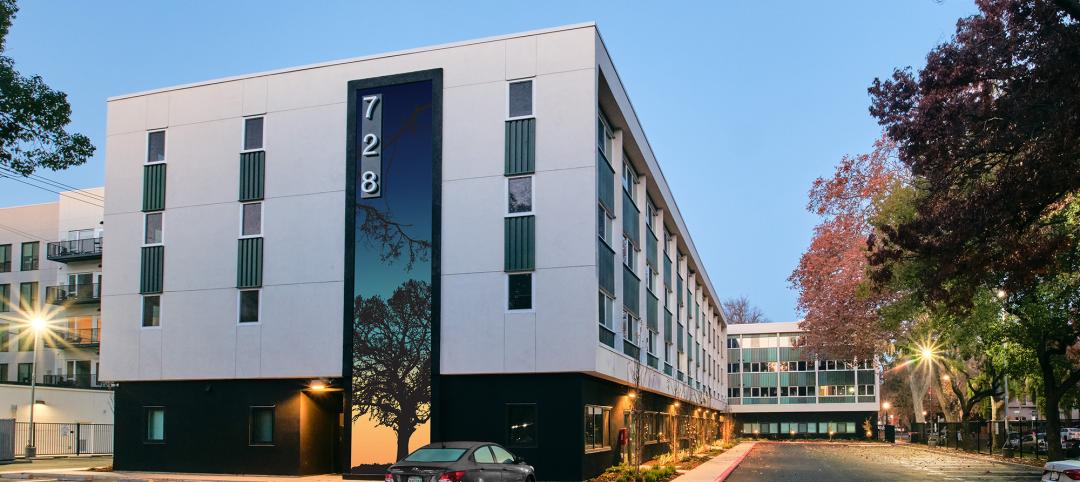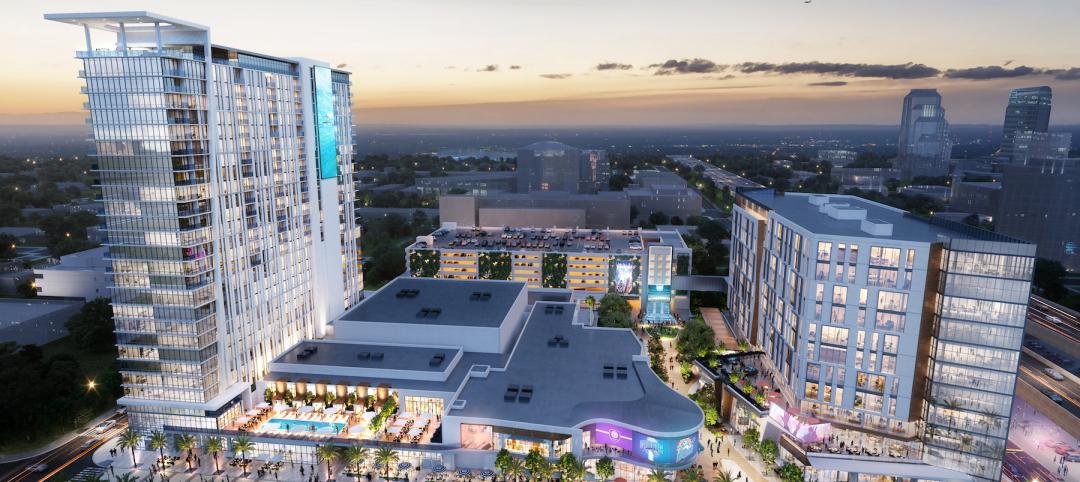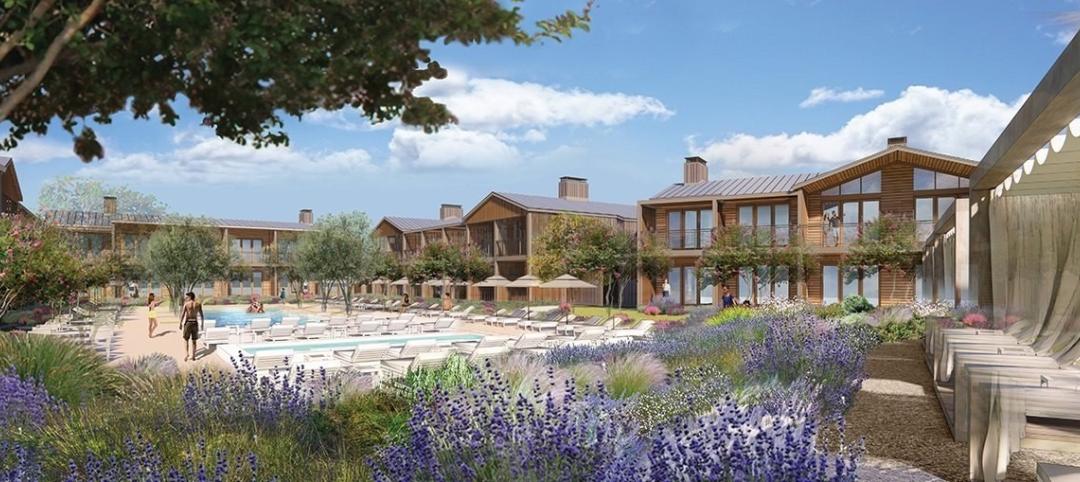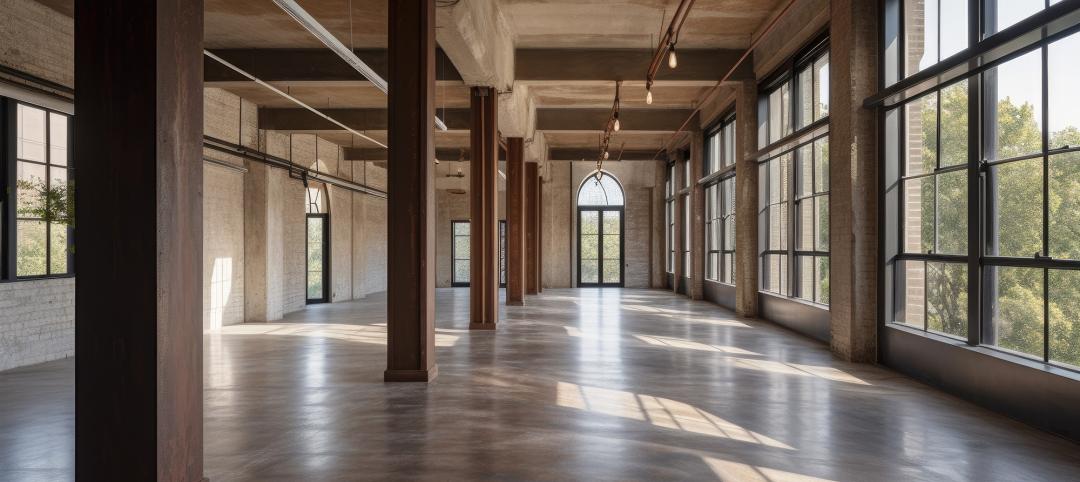In October 2008, The Proximity, a 102,000-sf, 147-room hotel in Greensboro, N.C., became the first LEED Platinum–certified hotel in the U.S., a designation it received following its opening the previous November.
Centerpoint Architecture designed this hotel with 4,000 sf of solar rooftop panels. Weaver-Cooke Construction recycled 87% of the 1,535 tons of construction debris, one of more than 60 sustainable practices executed for this $28 million project. The hotel featured geothermal-powered refrigeration and the first regenerative drive elevators in North America. In its first full year of operation, The Proximity used 39% less energy than a conventional hotel/restaurant, and two million fewer gallons of water, saving $13,000.
Since then, only two other hotels have earned LEED Platinum—the WATG-designed Bardessono in Yountville, Calif.; and the previously LEED-certified College Park Marriott Hotel & Conference Center in Maryland, which earned Platinum in August after a massive multiyear renovation.
It cost Quaintance-Weaver Restaurants & Hotels $1.5 million to $2 million extra to achieve its environmental goals at The Proximity. But the developer took comfort that those upgrades would pay for themselves within four years and save the company at least $140,000 a year in utility costs.
“Almost every time we made a decision, we saw that there was a sustainable approach that was also practical,” Dennis Quaintance, the developer’s owner, said at the time.
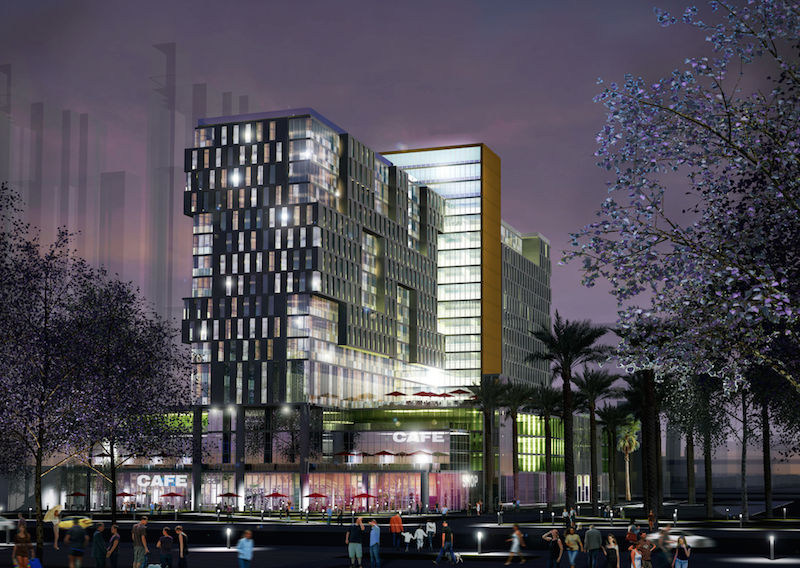 Lane Field North, a 253-key select-service hotel married to a 147-key extended-stay hotel on San Diego’s waterfront, is cooled by a variable refrigerant flow system: VRF allows four rooms to operate off of one compressor. John Portman & Associates was the design architect, with Integrated Design Engineers (SE), Project Design Consultants (CE),Tk1sc collaborative (ME), Michael Wall Engineering (EE), McParlane & Associates (PE), and Hensel Phelps Contracting (GC). Rendering: John Portman & Associates
Lane Field North, a 253-key select-service hotel married to a 147-key extended-stay hotel on San Diego’s waterfront, is cooled by a variable refrigerant flow system: VRF allows four rooms to operate off of one compressor. John Portman & Associates was the design architect, with Integrated Design Engineers (SE), Project Design Consultants (CE),Tk1sc collaborative (ME), Michael Wall Engineering (EE), McParlane & Associates (PE), and Hensel Phelps Contracting (GC). Rendering: John Portman & Associates
Seven years later, developers and their AEC partners still talk about “sensible sustainability” as a guiding standard for their hotels. “Sustainability is a talking point, but everyone has been doing a substantial amount of this forever, because it simply makes sense,” says Gordon Beckman, Principal/Design Director for Atlanta-based A/E firm John Portman & Associates. “Everybody’s working from the same basic palette.”
Portman’s recent hotels include the first 180-room Hotel Indigo in Denver, part of the 200,000-sf Union Tower West mixed-use development that’s scheduled to open next year. Among the sustainable features: proximity to transit (it’s adjacent to Denver Union Station) and extensive use of recycled materials, which Beckman says “is probably the most environmentally friendly thing that we can do.”
Mark Pratt, Associate Principal with VOA Associates, Chicago, says that marketing imperatives leave owners and developers with little choice but to incorporate sustainability into their hotels. “With the power of the Internet, the hotel guest has the ability to research and choose a sustainable experience,” he says. “In a complex marketplace, sustainability can be a deciding factor for the consumer. The pressure is on hotels to do the right thing.”
One reason Domaine Hospitality Partners is targeting LEED Platinum for its planned 160-room luxury hotel in Pacific Grove, Calif., is because the expectations of local residents and potential customers are so high. “In this market, there are several Internet companies that are building massive, sustainable headquarters and campuses, so sustainability is expected,” says Michael Crall, Domaine’s Chief Development Officer.
This Mark Hornberger–designed hotel, to be built on the site of the old American Tin Cannery, won the endorsement of an important neighbor, the Monterey Bay Aquarium, because its plan included sharing public space and attaining LEED Platinum certification.
One of the sustainable features being considered for the project is a water-recycling system similar to the one at Gillette Stadium in Foxborough, Mass., which reuses storm- and wastewater for flushing, irrigation, and cooling towers.
SCALING BACK ON ENERGY USAGE
Hotels are notorious energy hogs, and their branding companies, which set the parameters for how hotels get built, “are very conscious of utility consumption,” says Dennis Mickeleit, Project Executive with Tutor Perini Building Corp., in Philadelphia. Energy usage, he says, is “the main driver” of design.
Mickeleit notes that improvements in lighting, plumbing, and HVAC have come the furthest in helping to dramatically reduce consumption. The biggest advancements come from the MEP field, such as the use of occupancy sensors.
“It’s all about the rooms,” says Dennis W. Davies, PE, SE, Senior Principal, Magnusson Klemencic Associates (MKA), Seattle. “A typical hotel room needs to be optimized and intensively evaluated in as many ways as possible before moving a design forward,” he says. “This goes for system energy efficiency, as well as the consumptive materials that go into making the rooms.”
MKA’s latest hotel project is at 8th Avenue and Howell Street in Seattle. Developer R.C. Hedreen got the go-ahead to start construction in July; at 45 stories, it will be the tallest hotel in the Pacific Northwest. It will be constructed with “high levels” of off-site prefabrication, says Davies. Embodied carbon life cycle assessment is being factored into the project’s design.
Portman is currently building two hotels in San Diego, Lane Field North and South, which will employ variable refrigerant flow systems, where the refrigerant comes on only when needed. “Four rooms can be run off of one compressor,” says Beckman. “This system gives us more zoning options.” VRF makes economic sense, he says, even if, from an architectural view, more condensers are needed.
Beckman, however, laments that energy modeling software still hasn’t caught up with regulations and standards. “You can’t legislate good design,” he says, “you can only encourage it.”
LEED AS ‘AN ASPIRATIONAL GOAL’
VOA’s Pratt thinks that the hotel sector still has a long way to go in terms of efficiency and sustainability, despite advances in energy and water management systems. “LEED is a good first step,” he says. VOA’s new 17-story, 206-key Hyatt Place, located in Chicago’s Downtown Loop, achieved LEED Silver in part by favoring materials that were not on various red lists and by using recycled furniture, finishings, and equipment in its mix.
MKA’s Davies contends that LEED is “an aspirational goal.” He says that the most insightful developers and the best projects first devise a number of sustainability strategies, and that LEED is a second step to see how those aspirations measure up. Only then, he says, can adjustments be made to assess whether the hotel’s design and construction can be stretched to a higher level of efficiency and sustainability.
Related Stories
Smart Buildings | Jul 25, 2024
A Swiss startup devises an intelligent photovoltaic façade that tracks and moves with the sun
Zurich Soft Robotics says Solskin can reduce building energy consumption by up to 80% while producing up to 40% more electricity than comparable façade systems.
Adaptive Reuse | Jun 13, 2024
4 ways to transform old buildings into modern assets
As cities grow, their office inventories remain largely stagnant. Yet despite changes to the market—including the impact of hybrid work—opportunities still exist. Enter: “Midlife Metamorphosis.”
Adaptive Reuse | May 9, 2024
Hotels now account for over one-third of adaptive reuse projects
For the first time ever, hotel to apartment conversion projects have overtaken office-to-residential conversions.
Adaptive Reuse | Apr 29, 2024
6 characteristics of a successful adaptive reuse conversion
In the continuous battle against housing shortages and the surplus of vacant buildings, developers are turning their attention to the viability of adaptive reuse for their properties.
Hotel Facilities | Apr 24, 2024
The U.S. hotel construction market sees record highs in the first quarter of 2024
As seen in the Q1 2024 U.S. Hotel Construction Pipeline Trend Report from Lodging Econometrics (LE), at the end of the first quarter, there are 6,065 projects with 702,990 rooms in the pipeline. This new all-time high represents a 9% year-over-year (YOY) increase in projects and a 7% YOY increase in rooms compared to last year.
Mixed-Use | Apr 23, 2024
A sports entertainment district is approved for downtown Orlando
This $500 million mixed-use development will take up nearly nine blocks.
Hotel Facilities | Apr 17, 2024
Will the surge in hotel construction carry resorts with it?
The resort corner of the hospitality sector has been a bit slower to expand than the whole for the past few years. But don’t tell that to Bill Wilhelm, President of R.D. Olson Construction.
Sponsored | Hotel Facilities | Apr 8, 2024
The Rise of Mobile Keys in Hospitality
Unlocking the future of hospitality—mobile keys are transforming the guest experience and streamlining hotel ops.
Adaptive Reuse | Mar 30, 2024
Hotel vs. office: Different challenges in commercial to residential conversions
In the midst of a national housing shortage, developers are examining the viability of commercial to residential conversions as a solution to both problems.
Adaptive Reuse | Mar 26, 2024
Adaptive Reuse Scorecard released to help developers assess project viability
Lamar Johnson Collaborative announced the debut of the firm’s Adaptive Reuse Scorecard, a proprietary methodology to quickly analyze the viability of converting buildings to other uses.


